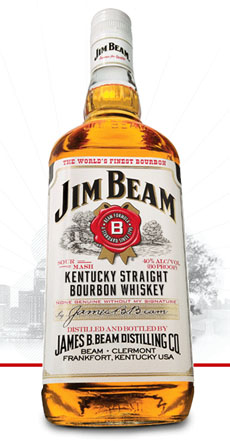

Learning to taste whiskey properly will help you appreciate its complexity and nuances. Start with a Chivas on the rocks—one of the finest blended Scotch whiskeys.
|
THALIA DEMAKES is a freelance writer.
|
|
March 2006
Updated November 2009
|
 |
Product Reviews / Main Nibbles / Cocktails & Spirits
Whiskey 101
Learning To Appreciate the Wonders of Whiskey (A.K.A. Whisky)
CAPSULE REPORT: A true gastronome can be described as one fascinated by the roles food and drink play in culture. While many foodies have familiarized themselves with the world of wine, the same cannot necessarily be said for the other “W,” whiskey. Whiskey is an incredibly nuanced drink, full of flavors that are both subtle and complex at the same time. Learning to taste it properly can open up a whole new world of enjoyment.
Here, we offer a “crash course” on the drink: what it is, where it came from, an explanation of the different types, a guide to tasting it and tips for throwing a whiskey-tasting party. This is Page 1 of a seven-page article. Click on the black links below to view the other pages.
Whiskey Overview
For the newcomer, beginning an exploration of whiskey can be daunting. There is such a wealth of information on the subject, and yet, sadly, the knowledge most folks—even many foodies—have is limited to the “highball” and the “whiskey sour.” Perhaps it comes down to reputation: given its potency, whiskey carries the stigma of being a hardcore drinker’s drink. While most everyone is vaguely familiar with the names Jameson and Jim Beam, many have no idea what constitutes a true whiskey, or how to distinguish one type from another. They know little about its origins (still a heated topic of debate, especially among the Scottish and Irish), the process by which it is made, the importance of region in regards to classification, or the character notes that distinguish one variety from the next. For the most part, people have tended to relate to Eric Asimov’s statement that whiskey always “seemed merely a means to an intoxicating end.”
While there may be some truth to some of the generalizations, the majority of these assumptions are false. Having withstood the test of time and attracted a loyal following in the process, whiskey deserves to be thought of as more than just a nice mixer. |
|

Jim Beam is a Bourbon, one of two American-born whiskeys. The other is Tennessee whiskey (such as Jack Daniel’s), which is almost identical to Bourbon except that Tennessee whiskey is filtered through sugar maple charcoal, which provides a unique flavor and aroma. |
Much to the delight of whiskey lovers, the tide finally seems to be turning. Whiskey has become quite fashionable, with tastings popping up faster than brands of artisanal chocolate. As with fine wines, more people are coming to see the creativity and innovation involved in detecting the distinct flavors and aromas in whiskey varietals.
Definition
Whiskey is a spirit made from a fermented mash of seed-fruit grains such as barley, rye or corn. In more elaborate terms, it is an alcoholic distillate with a multitude of variations, distinguished by the types of grain used in the fermentation process as well as the distinct distillation and aging processes. Regardless of the variety or country of origin, a general rule of thumb is that all straight whiskeys must be aged at least two years in wooden vessels, which are most often constructed of oak. Having said this, it is important to note that each nation has its own rules and regulations about what constitutes a true whiskey. (Find more terms and definitions in our Whiskey Glossary.)
Go To Page 2: History Of Whiskey & Types Of Whiskey
Go To The Article Index Above
© Copyright 2005-
Lifestyle Direct, Inc. All rights reserved. Images are the copyright of their respective owners.

|





